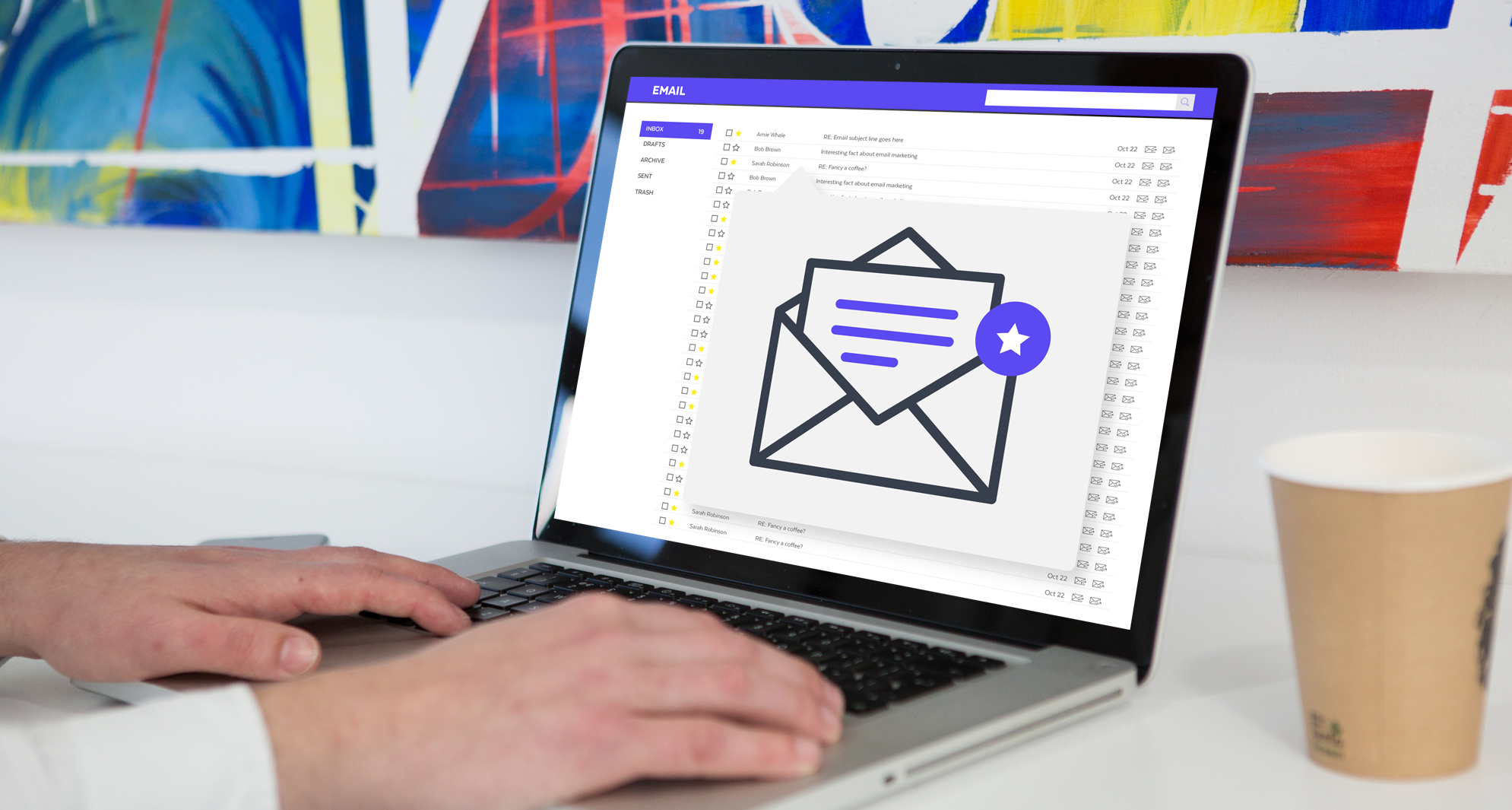- 12.09.19
- |
- Marketing
Email Personalisation & Personas
-
Article by
Amie Whale

Personalisation and personas – why they should matter to your email marketing
With over half of opened emails being deleted within two seconds, it’s time to think differently when it comes to planning your next email marketing campaign.
Every day, thousands of emails are sent to prospects in a hope of drumming up some extra business. It’s a tried and tested formula which has shaped the marketing scene for the past couple of decades.
However, there’s a lot of noise to contend with, which makes it incredibly hard for honest business owners and marketers to avoid being lumbered with the rest of the irrelevant, pushy and poorly written email marketing campaigns.
That’s where intelligent personalisation and personas come in.
Why do personalisation and personas matter?
Over the past couple of years, personalisation has become an integral factor in determining a business’ success. You only have to consider the demise in high-street retailers like Toys “R” Us and the boom in e-commerce sites such as Amazon to appreciate the change in the landscape.
Consumers no longer want to spend hours discovering things, they like the simplicity of having everything metaphorically and physically delivered to them. Products and services must be tailored and accessible.
As a result, email marketing has started to adapt to these needs. With so many options and so little time, if you’re sending a speculative campaign out to your email list, it doesn’t matter how special the content or the offer is – you’re already facing an uphill struggle if you don’t consider personalisation.
According to Chadwick Martin Bailey, 56% of unsubscribes happen when people receive irrelevant content from businesses.
To stay relevant, you must establish your buyer persona and personalise their email experience.
In fact, HubSpot’s research revealed that businesses who personalised their CTAs saw a 42% increase in conversation rates than generic CTAs.
Furthermore, 31% of consumers said they’re more likely to make purchases if they’re offered personalised experiences.
Understanding email personalisation and personas
Before you can implement an intelligent email marketing strategy, you need to think about what the definition of a buyer persona and personalisation is in relation to your business.
In layman’s terms, the idea of a persona (or buyer persona) is to address the motivation – i.e. what does the buyer need? What are their challenges? What motivates them to take action?
While the personality (or personalisation) aspect thinks about the temperament of every single person in your email list – i.e. what kind of triggers do they respond to? How do they read and behave to certain words or offers?
Putting personalisation and your buyer persona into action
As a business, it’s important to analyse the statistics from all of your previous email campaigns and find a correlation in the way your email list behaves or reacts to certain things.
You must create a buyer persona for your primary and secondary audiences as well. This should include:
- What their average age is
- Typical gender
- The type of profession and/or salary they would have
- What they like – i.e. what their triggers are
- What their buying habits are – do they prefer to shop online or go in-store? Do they like a sale?
- What their challenges are – i.e. they don’t have enough time to buy or do something themselves
- What kind of things they’re least likely to respond to via email marketing
Once you’ve identified your primary and secondary buyer personas, you’ll be able to personalise your email marketing campaigns.
But to do this successfully, you have to think about marketing segmentation. By segmenting your email list, you’ll stand a better chance of generating better open and conversion rates.
For starters, split your email list into lead, prospect, customer and former customer. You can then go one step further by segmenting these groups into cold, cool, warm or hot categories.
For more in-depth results in your email marketing segmentation process, identify the webpages your email list visited, webpages they haven’t visited, the collateral they downloaded and the types of emails they’ve previously engaged with.
All of these elements will transform a personalised email marketing campaign into an intelligent.
Over time, you can gain a better understanding of your buyer persona and smartly tailor your email marketing campaigns to reflect behaviours and seasonal trends. As a result, you’ll create more relevant content and see better results.
To find out more about implementing these ideas into your business’ email marketing strategy, give us a call on 0121 389 3033 or email ideas@eighty3creative.co.uk
